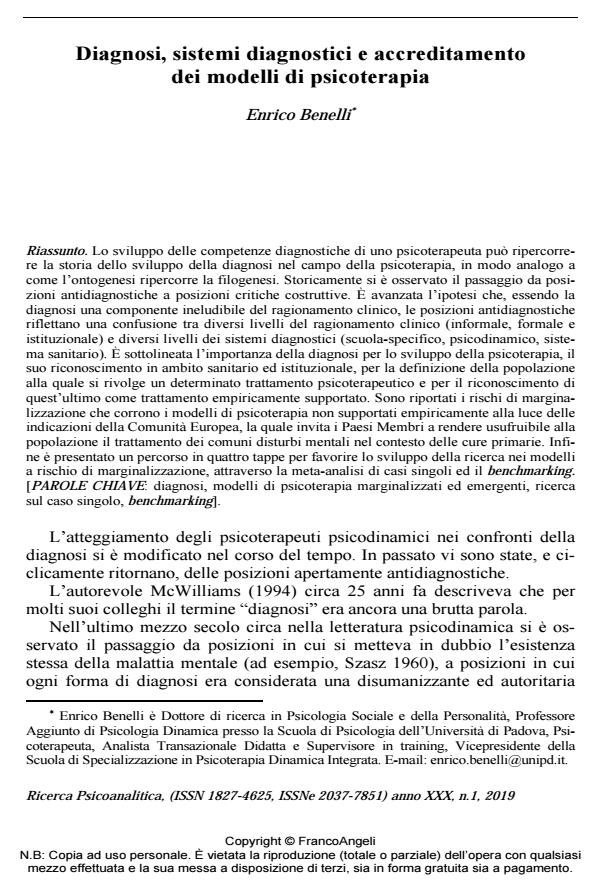Diagnosis, diagnostic systems and validation of psychotherapeutic models
Journal title RICERCA PSICOANALITICA
Author/s Enrico Benelli
Publishing Year 2019 Issue 2019/1
Language Italian Pages 16 P. 57-72 File size 197 KB
DOI 10.3280/RPR2019-001005
DOI is like a bar code for intellectual property: to have more infomation
click here
Below, you can see the article first page
If you want to buy this article in PDF format, you can do it, following the instructions to buy download credits

FrancoAngeli is member of Publishers International Linking Association, Inc (PILA), a not-for-profit association which run the CrossRef service enabling links to and from online scholarly content.
The development of a psychotherapist’s diagnostic skills can retrace the history of the development of diagnosis in psychotherapy just like ontogenesis retraces phylogenesis. Historically we witnessed the passage from anti-diagnostic positions to constructive critical positions. It has been suggested that since diagnosis is an unavoidable component of clinical reasoning, anti-diagnostic positions reflect confusion between different levels of clinical reasoning (informal, formal and institutional) and different levels of diagnostic systems (school-specific, psychodynamic, health system). The Authors stress the importance of di-agnosis in the development of psychotherapy, its recognition in health systems both for the identification of the population it is addressed to and the recognition of psychotherapy as an evidence-based treatment. The Authors enumerate the risks of marginalization run by non-evidence-based psychotherapeutic models given the indications of the European Union which invite Member Countries to include the treatment of common mental health disorders in primary care. In closing they present a process in four steps for favoring the development of research in the models at risk of marginalization through the meta-analysis of single cases and benchmarking.
Keywords: Diagnosis, marginalized and emerging models of psycho-therapy, research of single case, benchmarking].
Enrico Benelli, Diagnosi, sistemi diagnostici e accreditamento dei modelli di psicoterapia in "RICERCA PSICOANALITICA" 1/2019, pp 57-72, DOI: 10.3280/RPR2019-001005